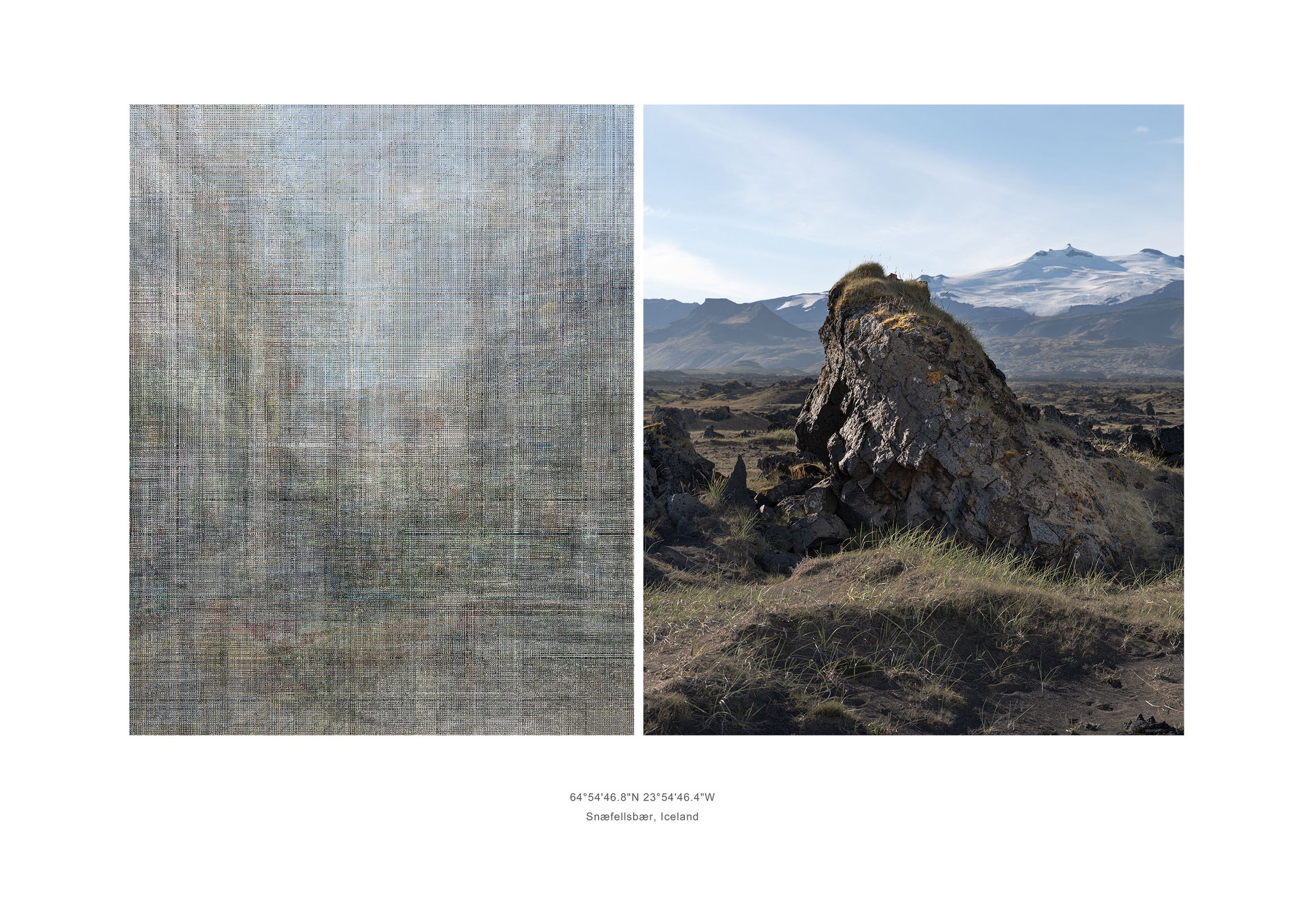
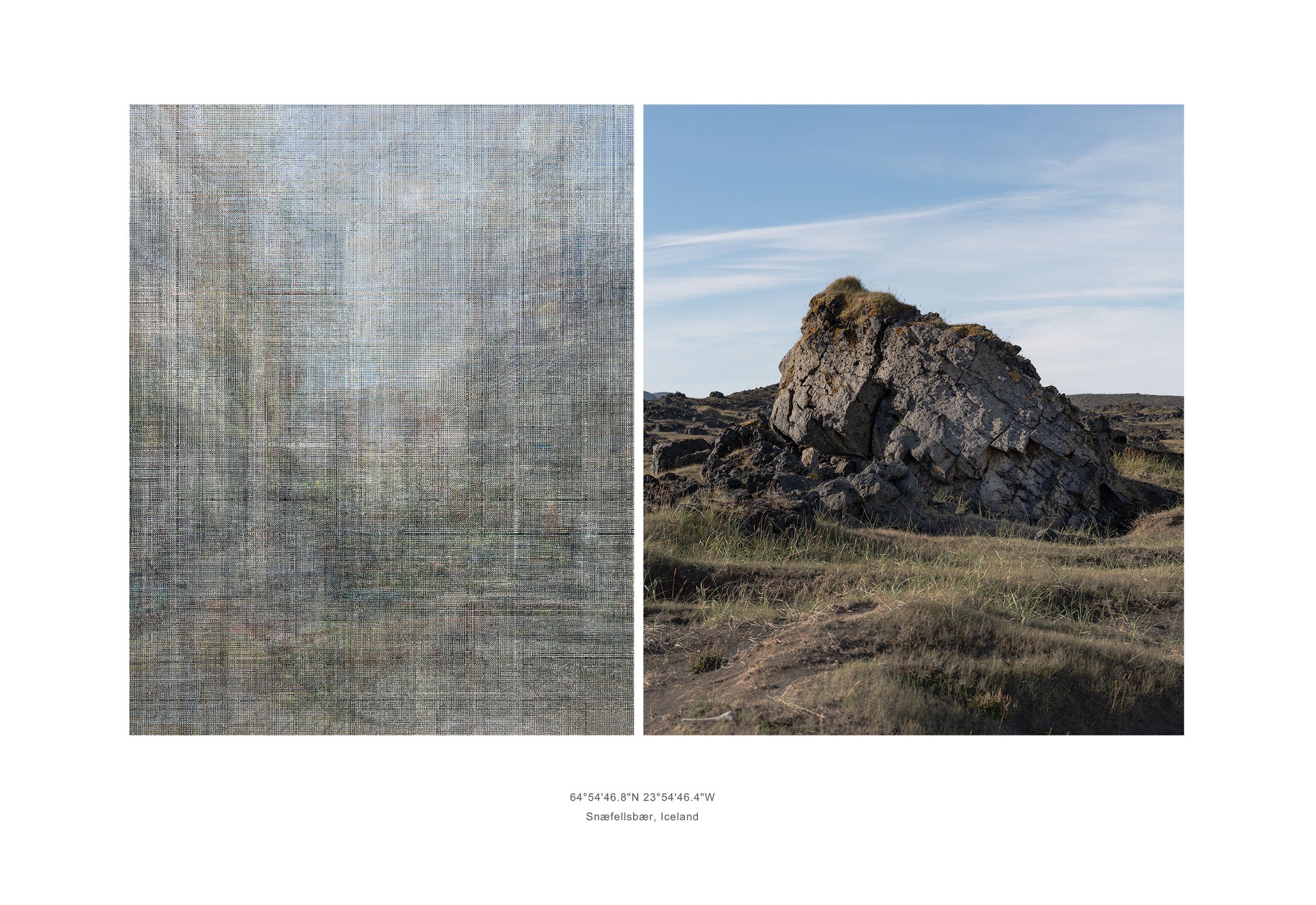
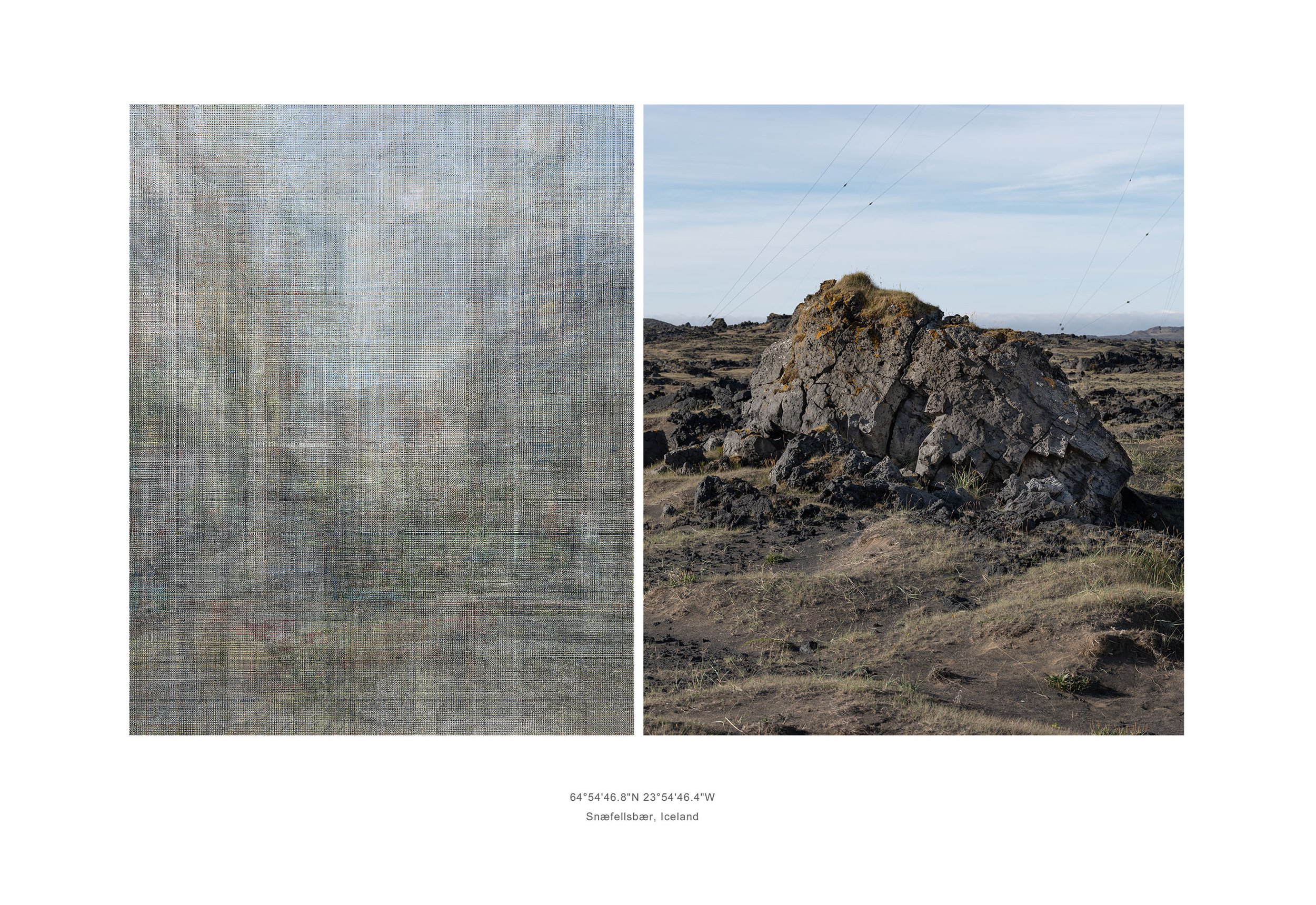
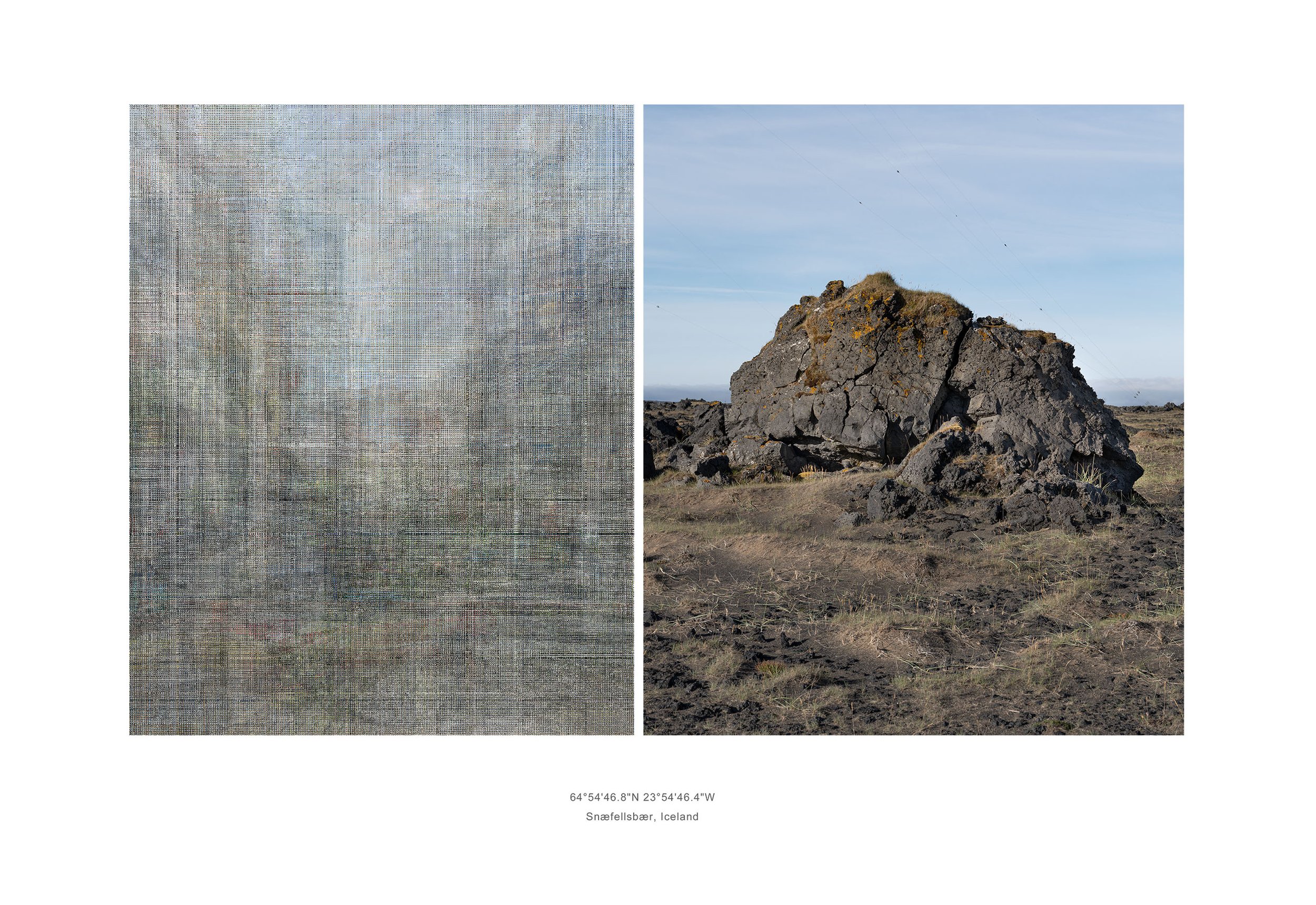
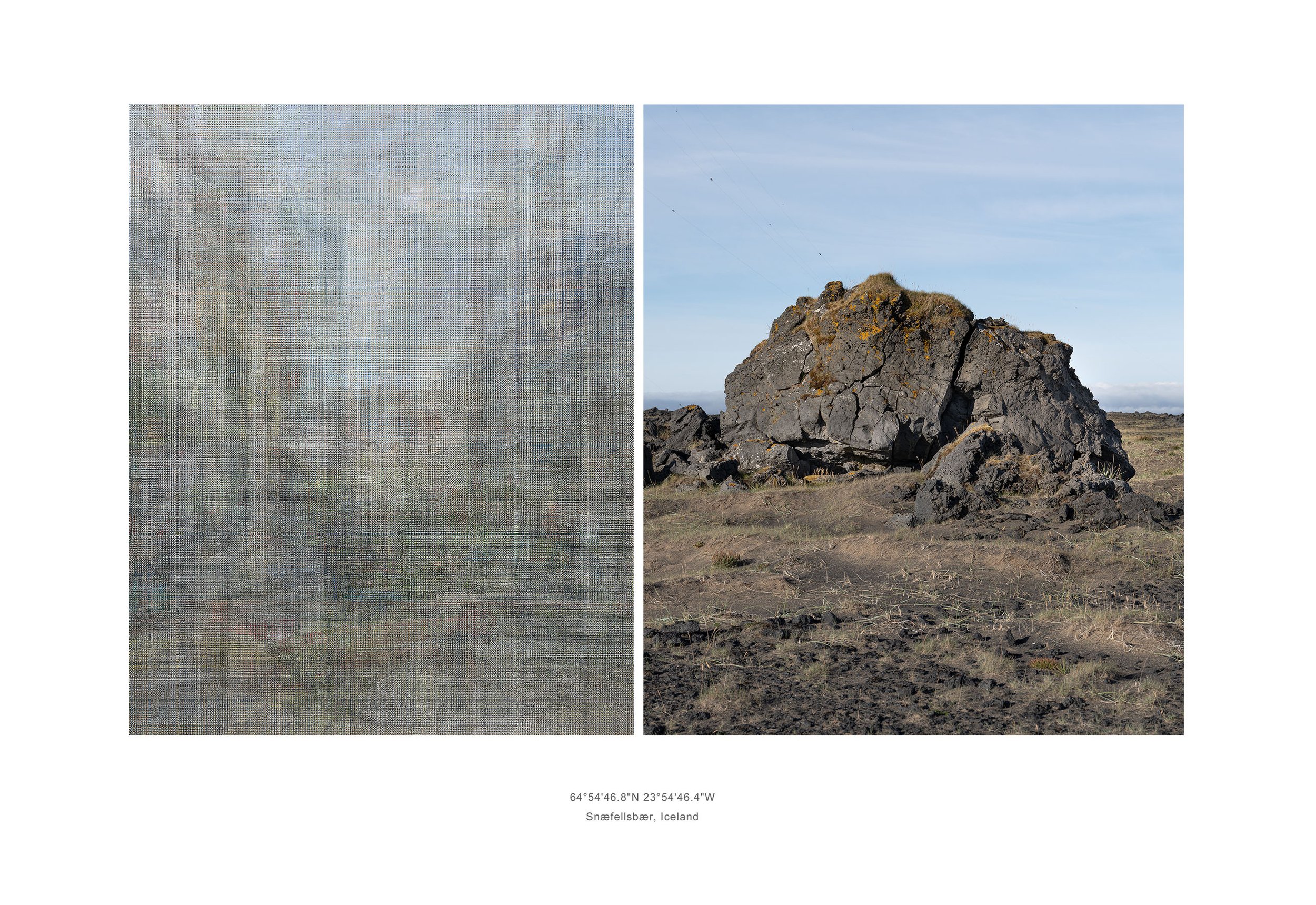
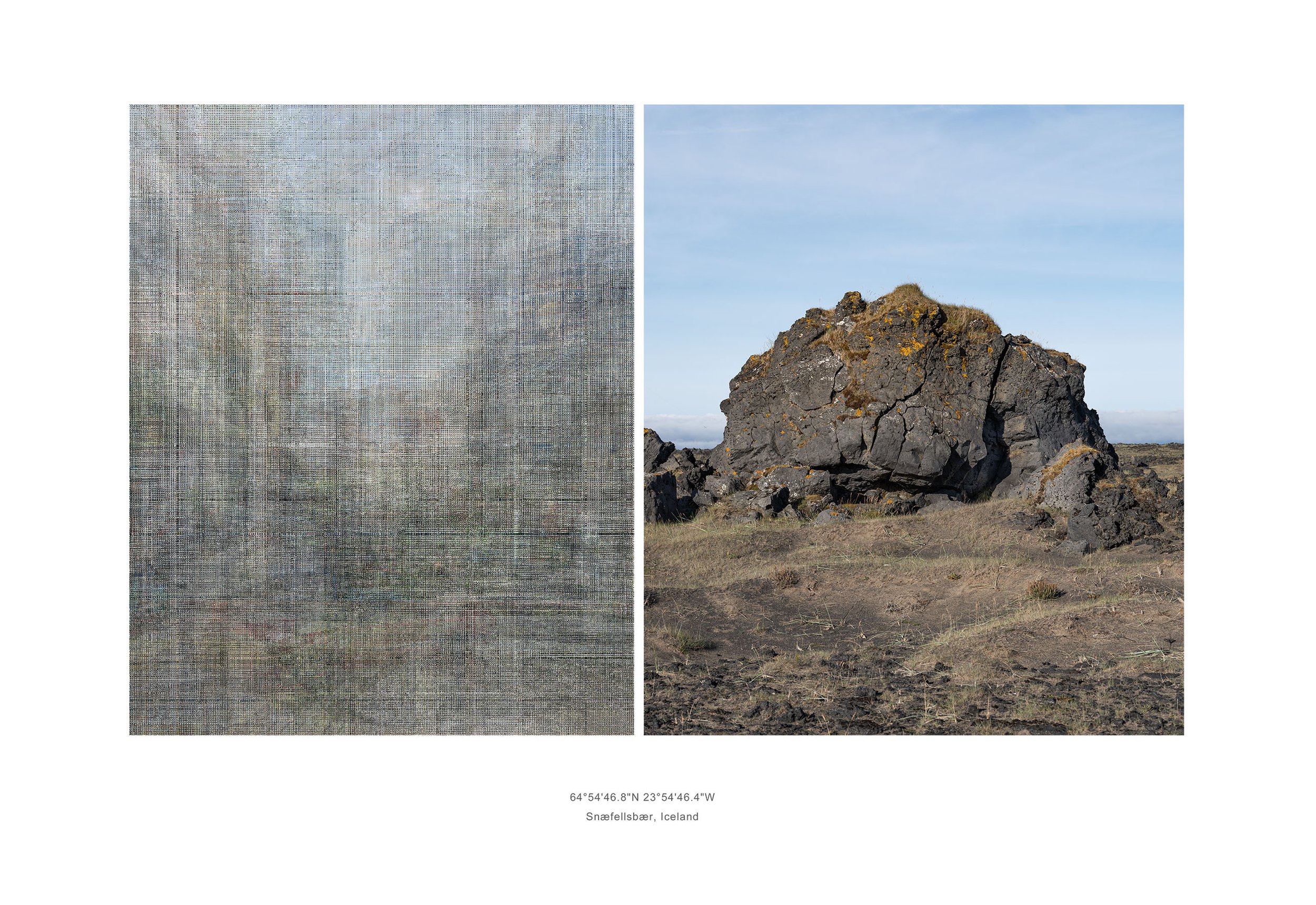

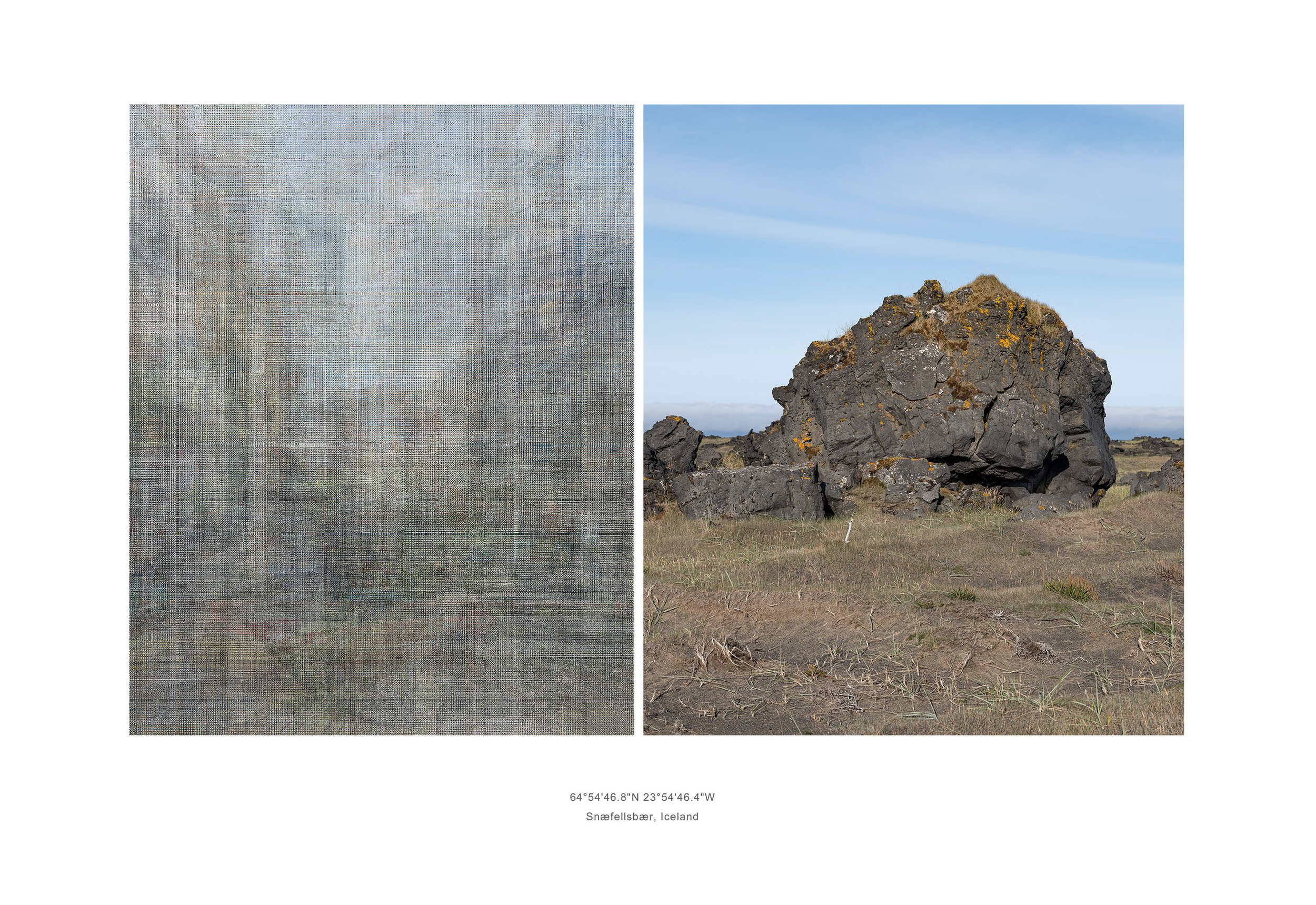
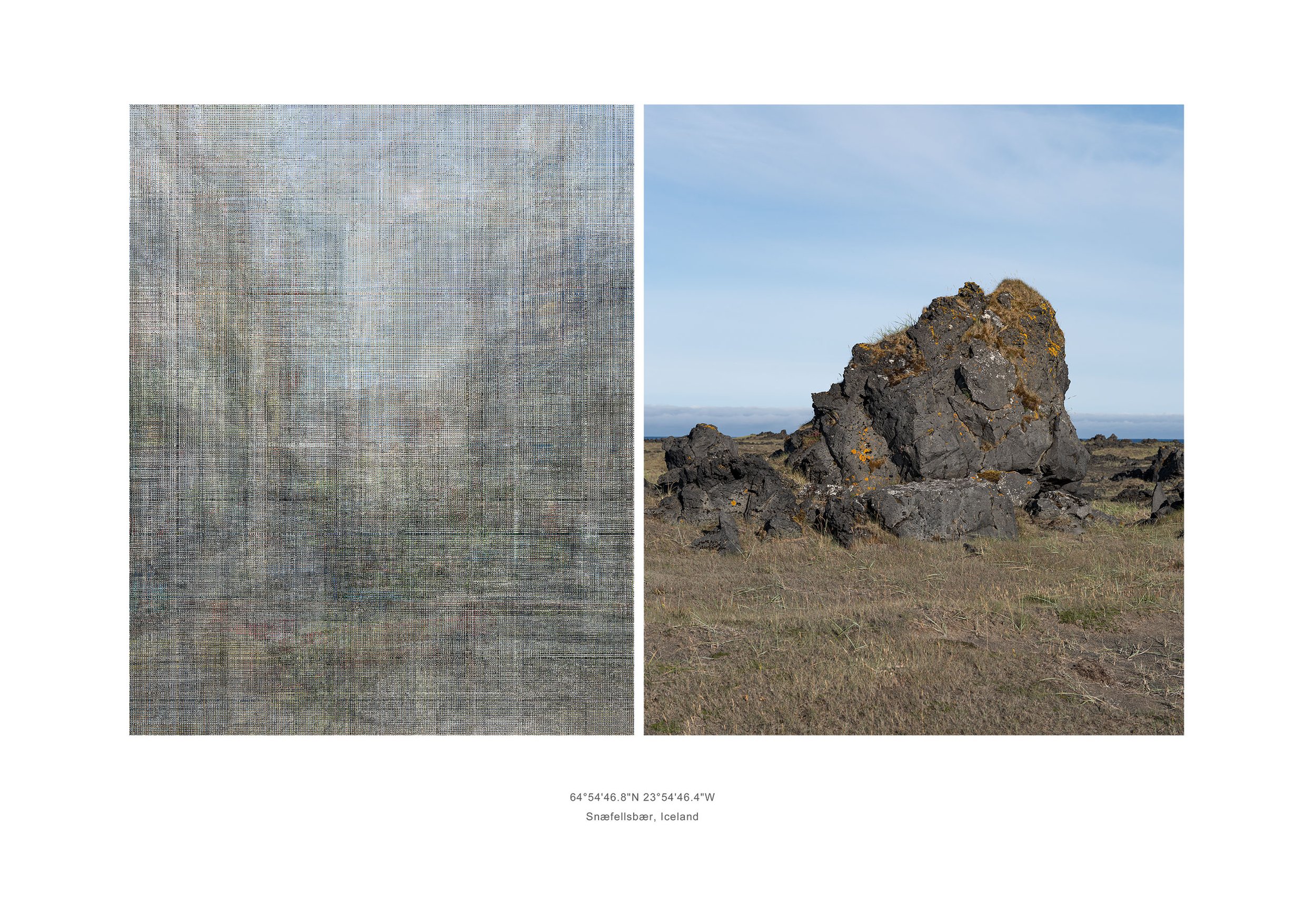
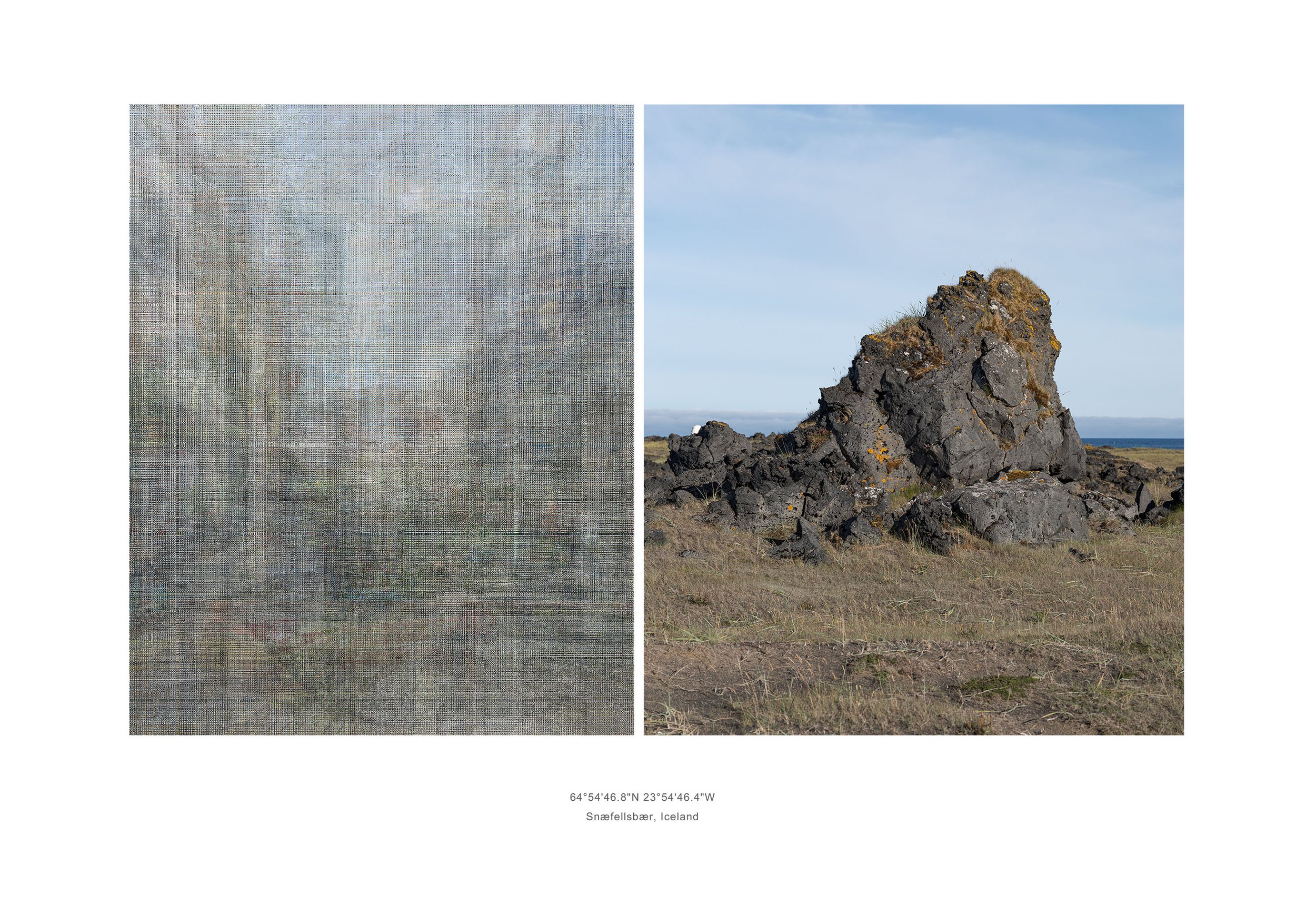
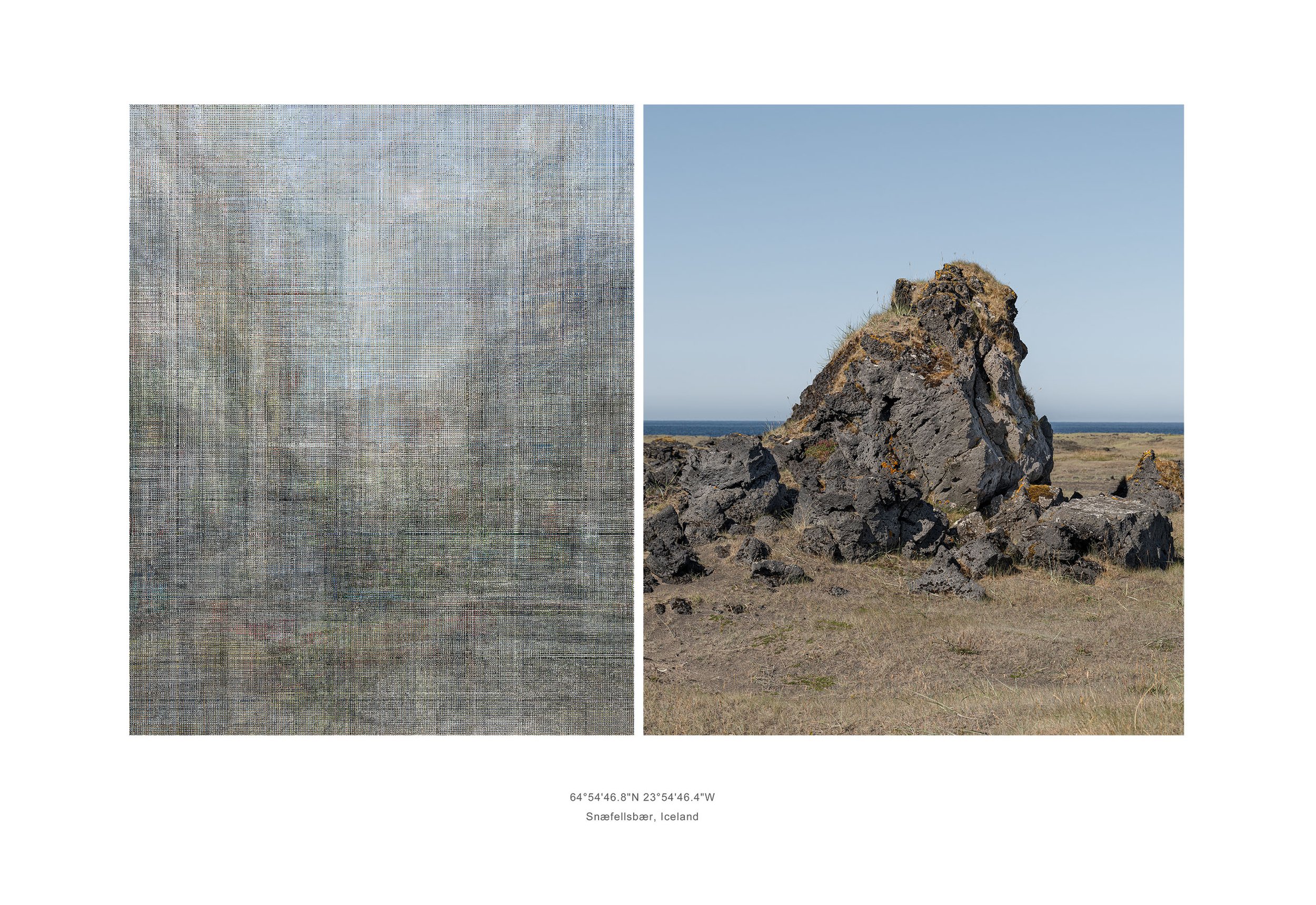
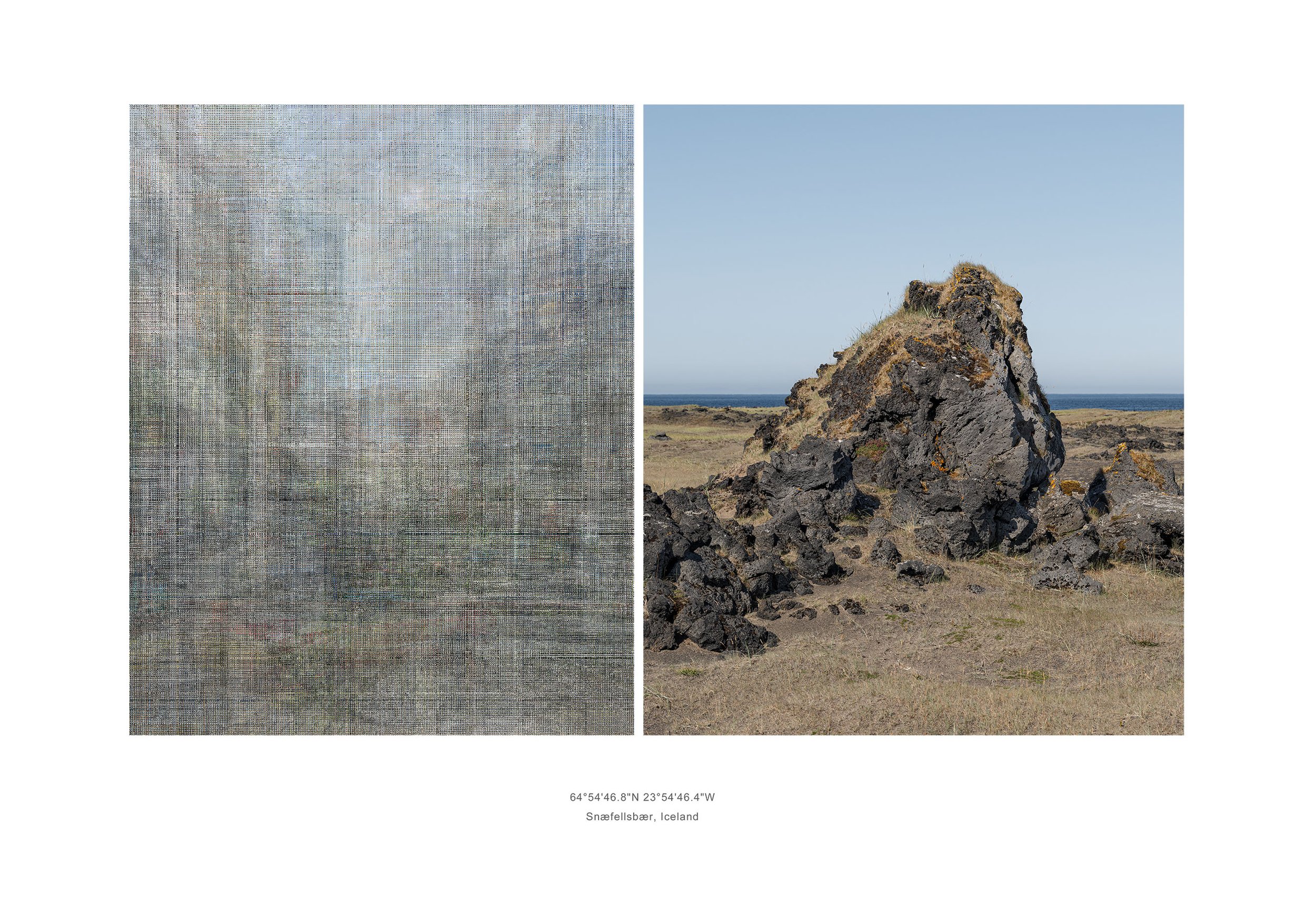
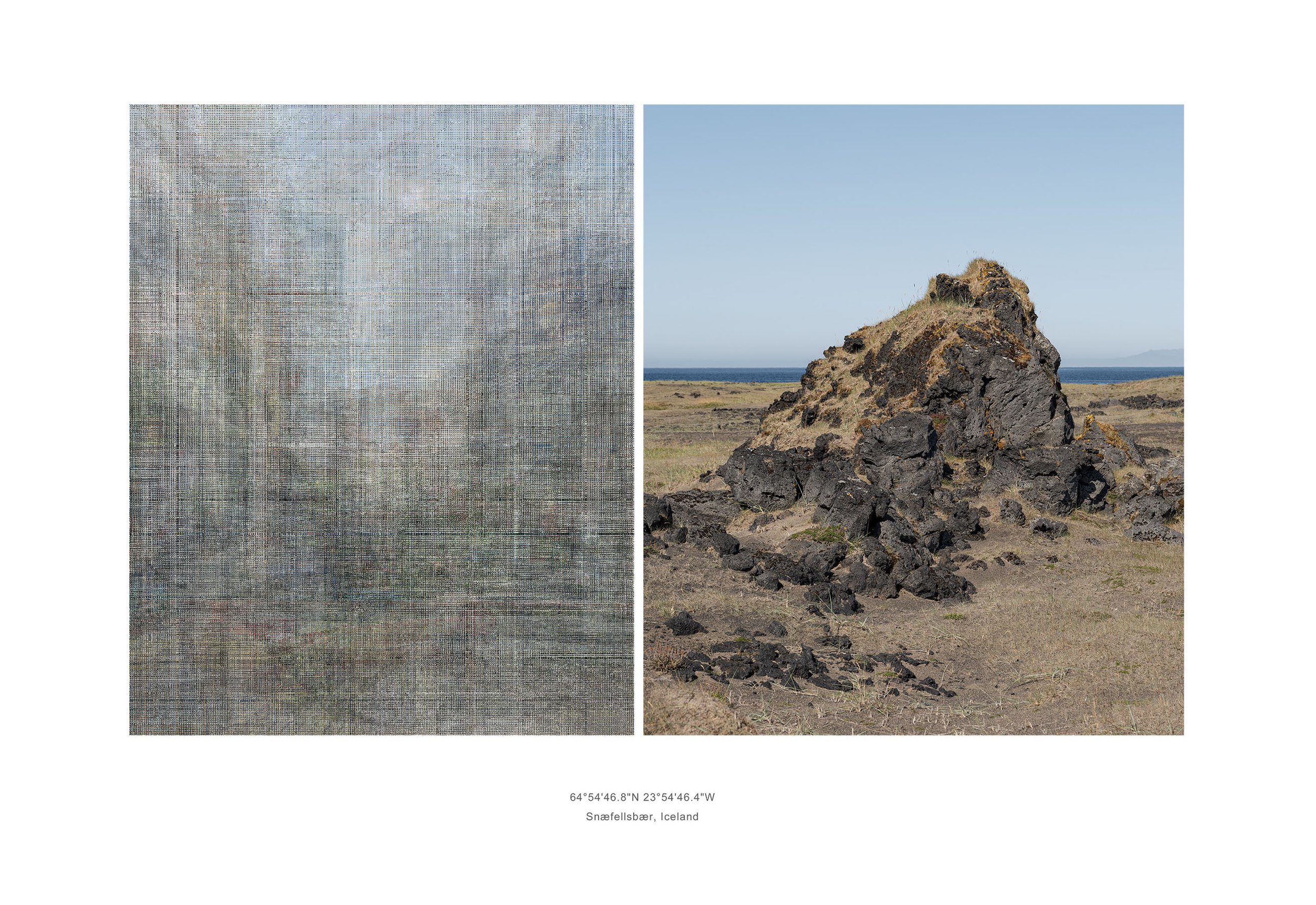

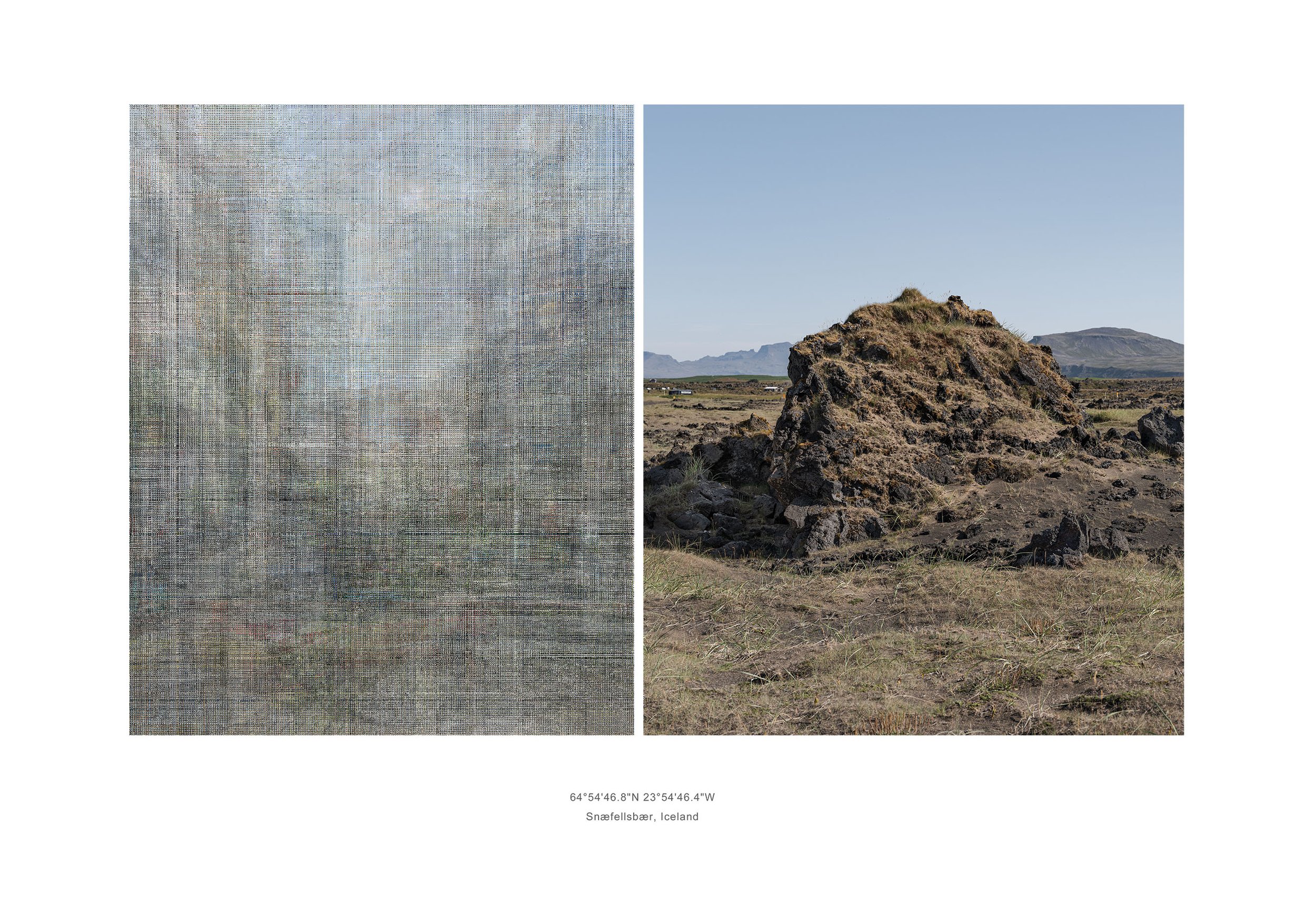
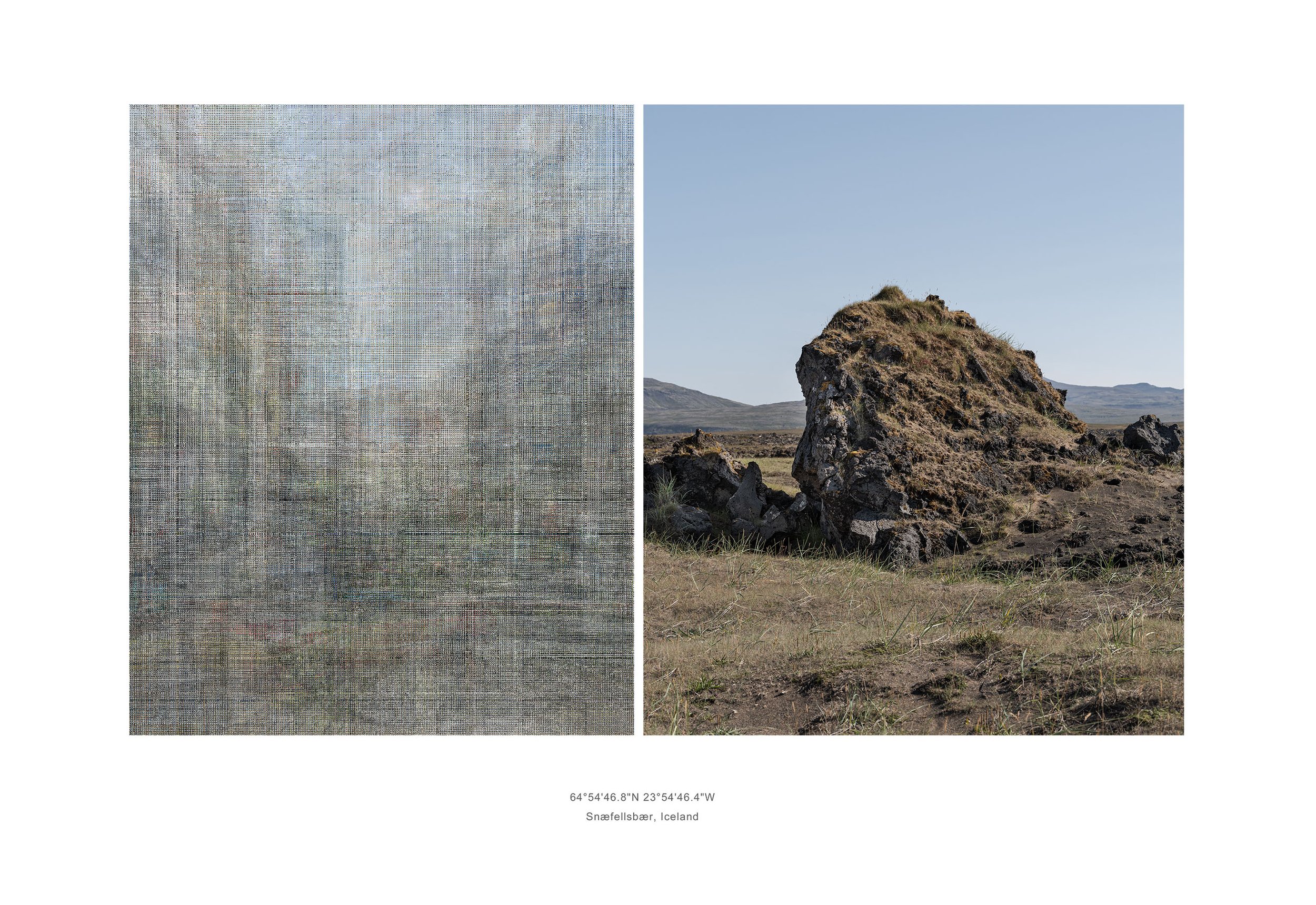
Our vision perceives this three-dimensional world by deducing it from a two-dimensional retinal image. In this manner human cognition is constantly scooping up fragmented images of the world, while abstracting and omitting much of it.
Similarly, the act of attempting to understand our planet transferred to a planar map, all the while apprehending it as a sphere, is an example of how our thinking coexists with "the limits of perception."
For this work, I sent the coordinates of a particular rock to 16 friends around the world, and asked them to take photos looking toward those coordinates, from their own location. Totally coincidentally, every one of them took the horizontal direction indicated by a map as their benchmark for determining the correct orientation, without bearing in mind that we are on a spherical planet.
In actual fact though there is a significant discrepancy between map and earth, meaning no rock in the direction each person was facing, and us losing sight of the rock on the map.
我们的视觉通过将三维世界投射为二维的视网膜图像来进行感知。在这个过程中,人类的认知在此过程中不断对信息进行抽象和省略,从而持续捕捉着世界的碎片化图像。
同样,我们虽然将地球视为球体,却习惯于通过二维的平面地图来理解它,这种行为便体现了我们的思维如何在 “知觉的局限” 中共存的方式。在此次创作中,我向世界各地的 16 位朋友发送了一块特定岩石的坐标,并要求他们从自己的位置朝着这个坐标拍摄照片。偶然的是,所有人都无意识地以地图上指示的水平方向作为确定方位的基准,而忽略了自己所处的地球是球体的事实。最终,由于地图与球体地球之间的巨大偏差导致,在他们所面向的方向上实际上并不存在那块岩石,我们也因此在地图上 “迷失” 了石头。
私たちの視覚は、この三次元的な世界を二次元の網膜像によって推定するように知覚している。このように、人間の認知は多くの物事を抽 象化したり省略しながら、この世界の像の断片を掬い続けている。
同様に、私たちが地球を球体と捉えている一方で、平面の地図上に置換しながら認識しようとする行為は、<知覚という制限>と共存しな がら思考していることの一例でもある。
今作では、世界各地にいる16人の友人に、ある石の座標を送り、それぞれ自分のいる場所からその座標に向かって写真を撮るように依頼を した。偶然にも彼らは全員、球体である地球上にいることを意識せずに、地図が指し示す水平的な方角を判断の基準としていた。 しかし実際には、地図と地球には大きなズレがあり、向いているその方角にはその石はなく、私たちは地図上で石を見失ってしまっているのだ。